Unit 4 Don`t eat in class. Section B(2a-2c)课件
文档属性
| 名称 | Unit 4 Don`t eat in class. Section B(2a-2c)课件 | 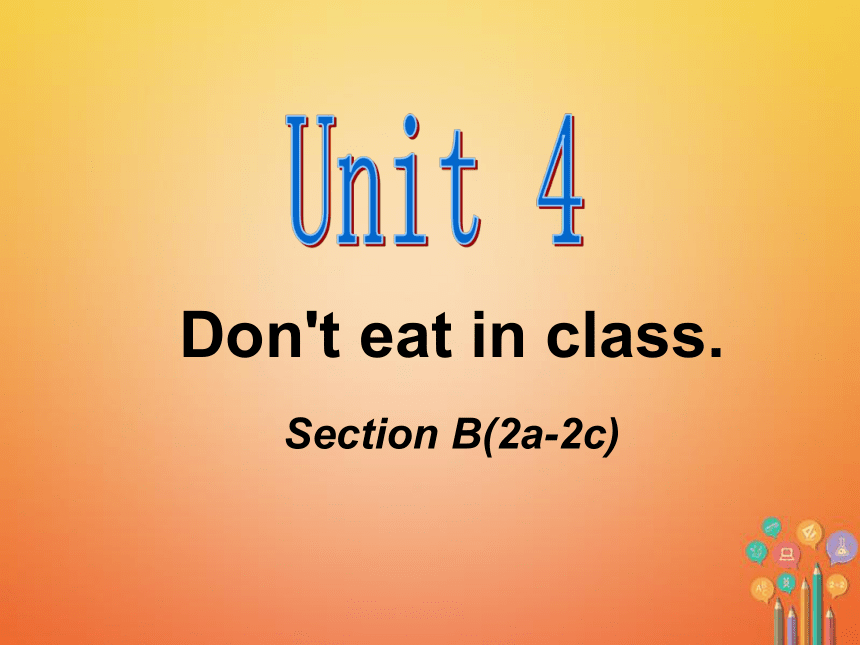 | |
| 格式 | ppt | ||
| 文件大小 | 579.5KB | ||
| 资源类型 | 教案 | ||
| 版本资源 | 人教新目标(Go for it)版 | ||
| 科目 | 英语 | ||
| 更新时间 | 2022-03-23 18:30:39 | ||
图片预览

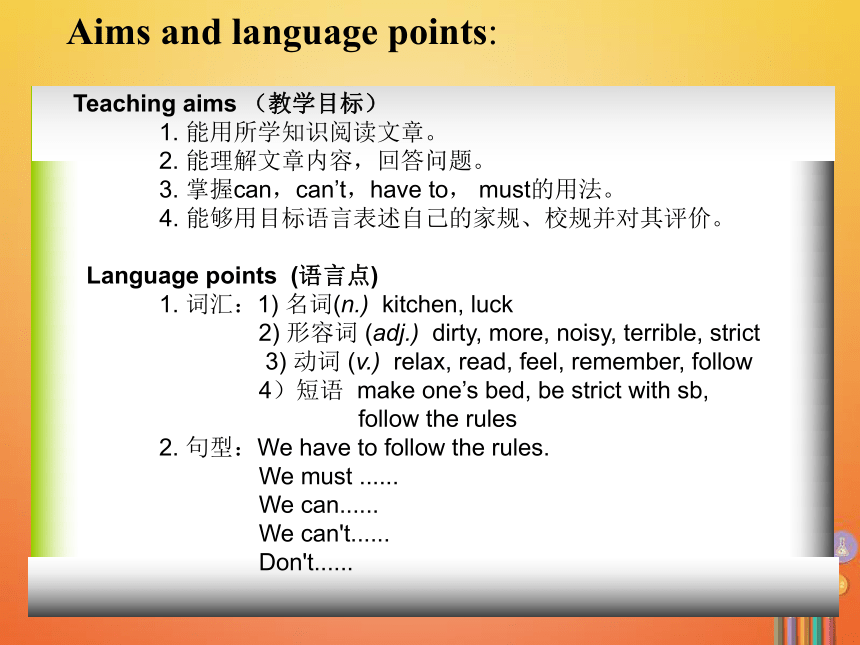
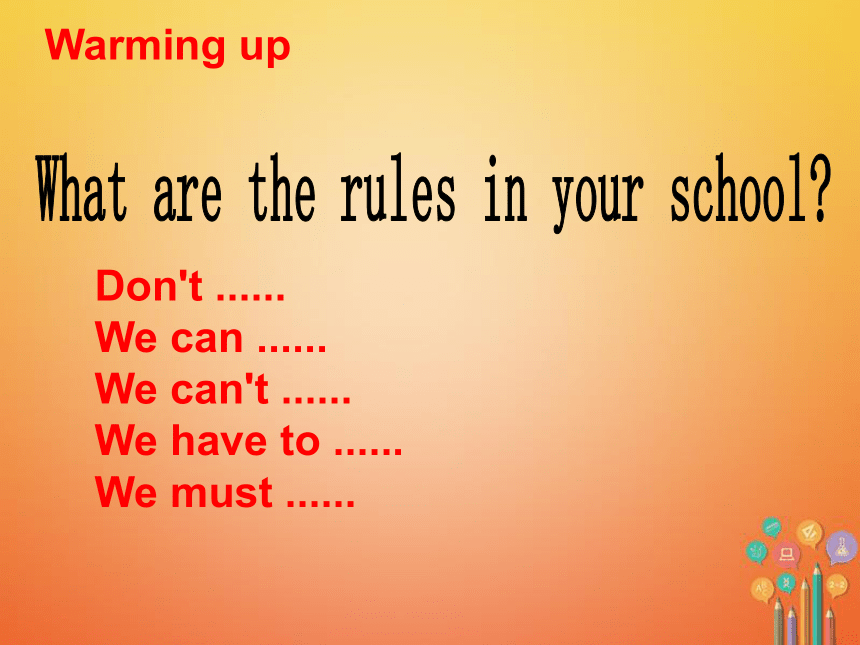
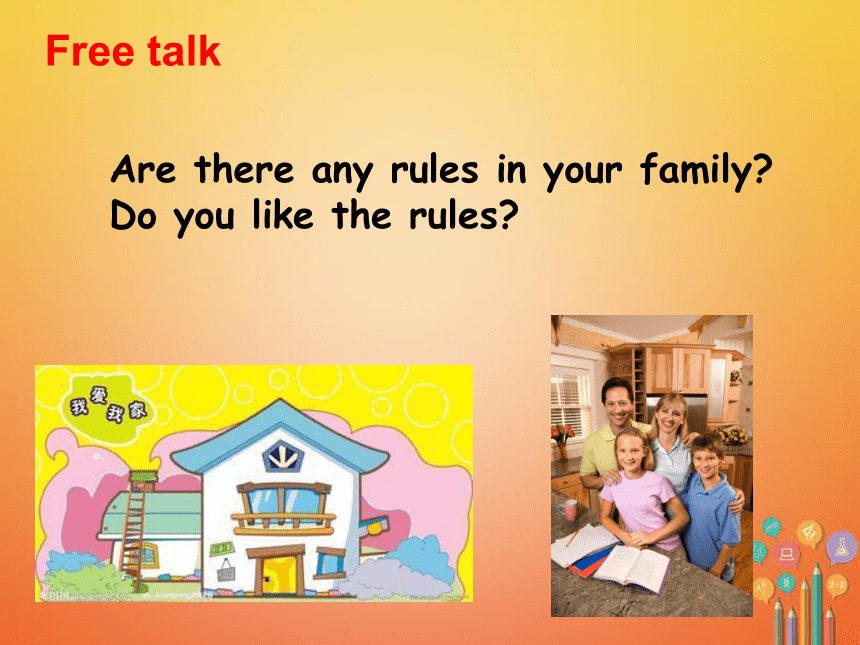
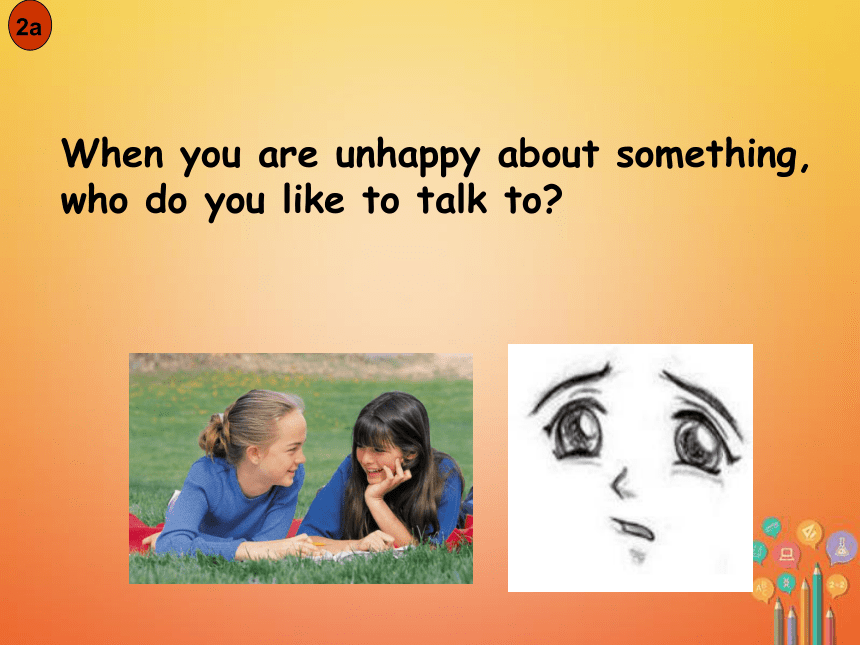
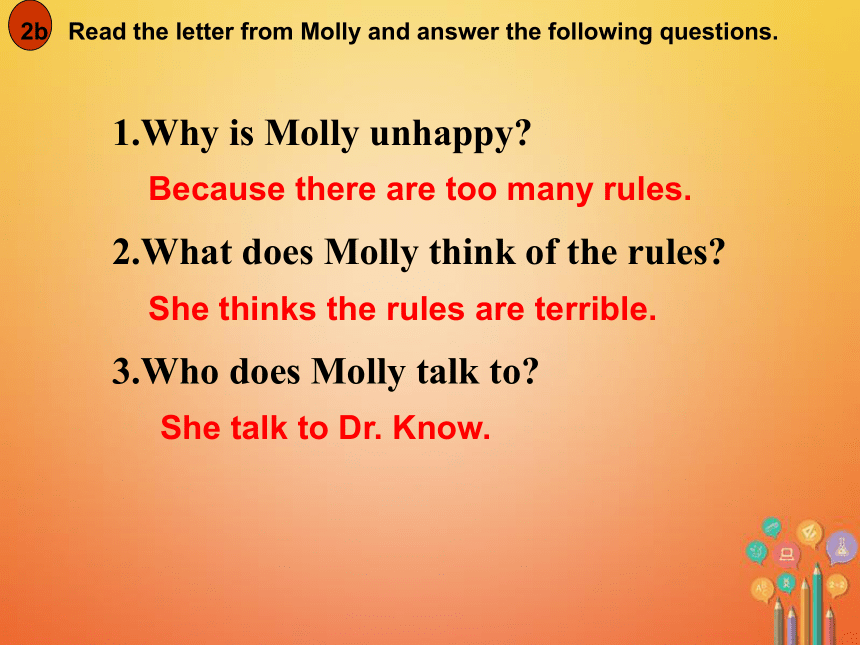
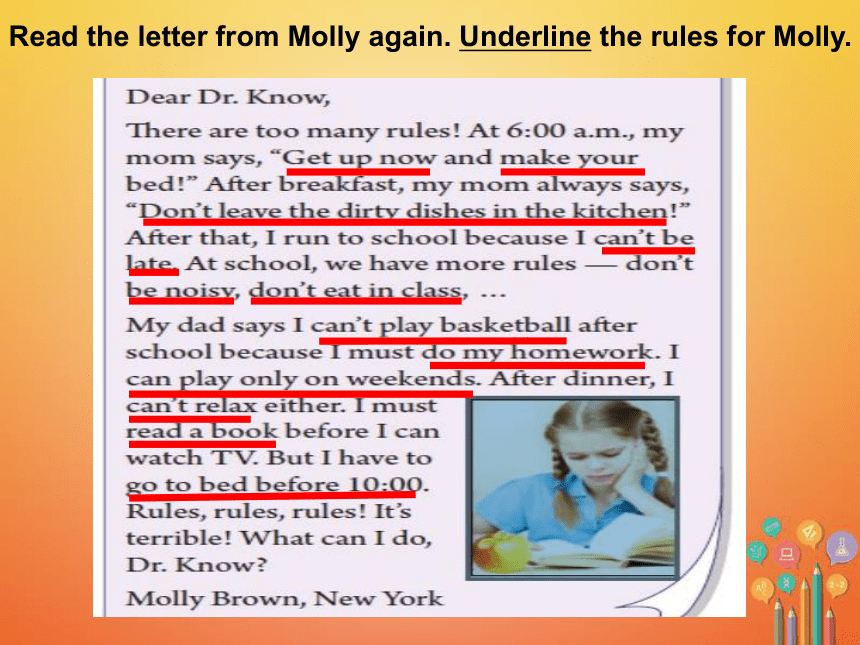
文档简介
(共14张PPT)
Section B(2a-2c)
Don't eat in class.
Aims and language points:
Teaching aims (教学目标)
1. 能用所学知识阅读文章。
2. 能理解文章内容,回答问题。
3. 掌握can,can’t,have to, must的用法。
4. 能够用目标语言表述自己的家规、校规并对其评价。
Language points (语言点)
1. 词汇:1) 名词(n.) kitchen, luck
2) 形容词 (adj.) dirty, more, noisy, terrible, strict
3) 动词 (v.) relax, read, feel, remember, follow
4)短语 make one’s bed, be strict with sb,
follow the rules
2. 句型:We have to follow the rules.
We must ......
We can......
We can't......
Don't......
Warming up
Don't ......
We can ......
We can't ......
We have to ......
We must ......
Are there any rules in your family
Do you like the rules
Free talk
2a
When you are unhappy about something,
who do you like to talk to
2b Read the letter from Molly and answer the following questions.
1.Why is Molly unhappy
2.What does Molly think of the rules
3.Who does Molly talk to
Because there are too many rules.
She thinks the rules are terrible.
She talk to Dr. Know.
Read the letter from Molly again. Underline the rules for Molly.
Read the letter from Dr. Know.
Underline the things Molly can do.
2c Read the letters again and complete the sentences with have to,
must , can or can’t.
1. Molly ________ play basketball on school days, but she
_______ play it on weekends.
2. Molly ________ do her homework first when she gets home.
3. Molly ________ read a book after dinner before she________
watch TV.
4. At school, Molly ________be noisy or eat in class.
5. Parents and schools make rules to help students. So students
_________ follow the rules.
can
can’t
must
must
can’t
have to
can
合作探究
小组讨论:运用have to, must, can’t, can写一写自己家里或学校的规矩,把你们的讨论结果记录下来,并在班上交流讨论。当你们不认同这些的规矩时,你们该怎么做
Exercise
单项选择
1._____ run in the classroom.
A.Can't B.Don't C.Not D.Be not
2.--- _____ you pass me the pen,please
--- Yes, I can.
A. Does B. Do C. Can D. Are
3. There's a PE. Lesson today, I _____ wear sports shoes.
A. must B. have to C.must to D.can
4. He often makes _____ bed after he gets up.
A.he B.him C.his D.her
5. ---Alice,are your parents strict _____you
---Yes,we have strict family rules.
A. in B.with C.on D.to
B
C
A
C
B
Summary
1.情态动词can,表示能力或客观的可能性,意为“能,会”。can的否定形式can not,通常缩写成can't。
2.情态动词must,表示“必须,一定”。must的否定形式must not,通常缩写成mustn't。
3.have to意为必须,不得不。相当于must。区别在于must侧重于说话者的主观意愿,认为有必要或有义务去做某事;have to则侧重于客观需要,含有“不得不”或“被迫”之意。
Homework
(1) Talk about the rules in the library or in the park with your partner.
(2) Finish Self Check.
Thank you
Section B(2a-2c)
Don't eat in class.
Aims and language points:
Teaching aims (教学目标)
1. 能用所学知识阅读文章。
2. 能理解文章内容,回答问题。
3. 掌握can,can’t,have to, must的用法。
4. 能够用目标语言表述自己的家规、校规并对其评价。
Language points (语言点)
1. 词汇:1) 名词(n.) kitchen, luck
2) 形容词 (adj.) dirty, more, noisy, terrible, strict
3) 动词 (v.) relax, read, feel, remember, follow
4)短语 make one’s bed, be strict with sb,
follow the rules
2. 句型:We have to follow the rules.
We must ......
We can......
We can't......
Don't......
Warming up
Don't ......
We can ......
We can't ......
We have to ......
We must ......
Are there any rules in your family
Do you like the rules
Free talk
2a
When you are unhappy about something,
who do you like to talk to
2b Read the letter from Molly and answer the following questions.
1.Why is Molly unhappy
2.What does Molly think of the rules
3.Who does Molly talk to
Because there are too many rules.
She thinks the rules are terrible.
She talk to Dr. Know.
Read the letter from Molly again. Underline the rules for Molly.
Read the letter from Dr. Know.
Underline the things Molly can do.
2c Read the letters again and complete the sentences with have to,
must , can or can’t.
1. Molly ________ play basketball on school days, but she
_______ play it on weekends.
2. Molly ________ do her homework first when she gets home.
3. Molly ________ read a book after dinner before she________
watch TV.
4. At school, Molly ________be noisy or eat in class.
5. Parents and schools make rules to help students. So students
_________ follow the rules.
can
can’t
must
must
can’t
have to
can
合作探究
小组讨论:运用have to, must, can’t, can写一写自己家里或学校的规矩,把你们的讨论结果记录下来,并在班上交流讨论。当你们不认同这些的规矩时,你们该怎么做
Exercise
单项选择
1._____ run in the classroom.
A.Can't B.Don't C.Not D.Be not
2.--- _____ you pass me the pen,please
--- Yes, I can.
A. Does B. Do C. Can D. Are
3. There's a PE. Lesson today, I _____ wear sports shoes.
A. must B. have to C.must to D.can
4. He often makes _____ bed after he gets up.
A.he B.him C.his D.her
5. ---Alice,are your parents strict _____you
---Yes,we have strict family rules.
A. in B.with C.on D.to
B
C
A
C
B
Summary
1.情态动词can,表示能力或客观的可能性,意为“能,会”。can的否定形式can not,通常缩写成can't。
2.情态动词must,表示“必须,一定”。must的否定形式must not,通常缩写成mustn't。
3.have to意为必须,不得不。相当于must。区别在于must侧重于说话者的主观意愿,认为有必要或有义务去做某事;have to则侧重于客观需要,含有“不得不”或“被迫”之意。
Homework
(1) Talk about the rules in the library or in the park with your partner.
(2) Finish Self Check.
Thank you
同课章节目录
- Unit 1 Can you play the guitar?
- Section A
- Section B
- Unit 2 What time do you go to school?
- Section A
- Section B
- Unit 3 How do you get to school?
- Section A
- Section B
- Unit 4 Don't eat in class.
- Section A
- Section B
- Unit 5 Why do you like pandas?
- Section A
- Section B
- Unit 6 I'm watching TV.
- Section A
- Section B
- Review of Units 1-6
- Unit 7 It's raining!
- Section A
- Section B
- Unit 8 Is there a post office near here?
- Section A
- Section B
- Unit 9 What does he look like?
- Section A
- Section B
- Unit 10 I'd like some noodles.
- Section A
- Section B
- Unit 11 How was your school trip?
- Section A
- Section B
- Unit 12 What did you do last weekend?
- Section A
- Section B
